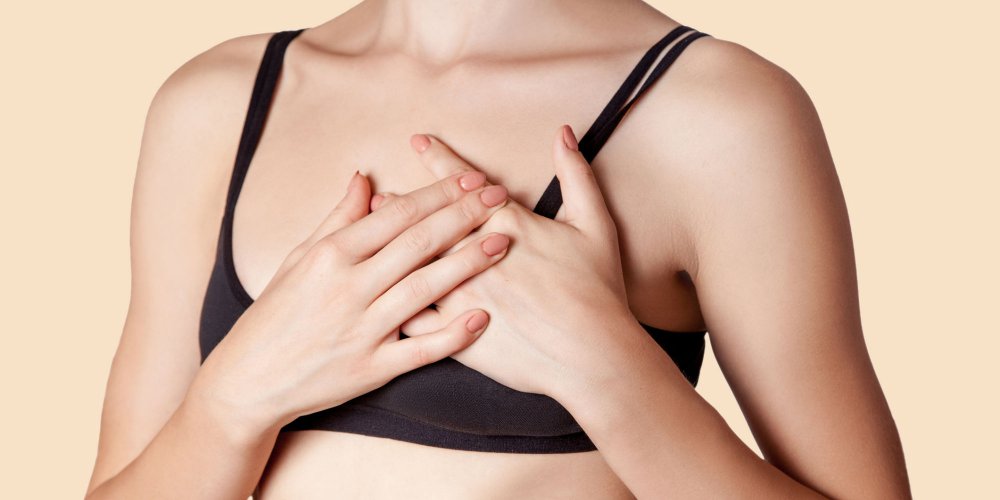In France, an estimated 49,000 breast cancer cases are diagnosed each year.
And in nearly 40% of cases, women use a mastectomy . A heavy and painful surgery both physically and psychologically.
Surgical practice less and less traumatic
Healing by preserving physical integrity has therefore become a priority. When possible, only the tumor is extracted and the breast preserved. Total ablation (mastectomy or mastectomy) is now unavoidable in only 28% of cases, whereas it was still the norm in the 1990s.
As a result, many patients are now operated on an outpatient basis. "They come up to the block and come back 3/4 of an hour later, which is less stressful than a conventional hospitalization," says Dr. Séverine Alran, surgeon and head of the outpatient surgery unit at the Institut Curie .
Result: instead of staying eight days in the hospital, they leave the next day, or even the same evening. In addition, the entire chain of lymph nodes from the breast was previously removed systematically to prevent the spread of metastases. This time is over.
"We only take the first ganglion (sentinel ganglion), says Séverine Alran.If it turns out healthy after analysis, axillary dissection is useless," which avoids the consequences of adverse consequences: risk of numbness of the arm and lymphedema ("big arm" syndrome).
Only 20% of women are now removed all ganglia, against 100% ten years ago. A nice step forward.
What are the different types of mastectomy?
- Total mastectomy : the entire mammary gland, areola, nipple and much of the breast skin are removed. Performed in prevention, this surgical operation minimizes the risk of getting breast cancer.
- The conservative mastectomy of the cutaneous case: all the skin of the breast is preserved, but not that of the areola or that of the nipple. Aesthetically the transformation is less important than with a total mastectomy but not the risks of infection.
- The conservative mastectomy of the areola-nipple plate: the areola and the nipple are preserved. This subcutaneous mastectomy offers a more aesthetic result but also more risky (with among other risks of infection and a total elimination of cancer cells that occurs only in half of the cases).
Is breast reconstruction systematic after a mastectomy?
After a mastectomy, women have the choice of whether or not to resort to breast reconstruction .
But this choice does not apply directly to all women, including those who are undergoing radiotherapy, overweight, those who suffer from high blood pressure or who are subject to smoking, or those for whom anesthesia is contraindicated. for example.
In these cases, it will be necessary to wait for the situation to regulate before resorting to a breast reconstruction, or to give it up.
Is it ever more prudent to undergo a double mastectomy?
Of course not, since each case is different. But double mastectomy can be important, if not essential, for women undergoing genetic mutations.
Can we breastfeed after a mastectomy?
While women who have undergone a conservative mastectomy breastfeed more easily than women undergoing total mastectomy, it appears that the majority of women still prefer breastfeeding with the breast that was not affected by the operation. Breastfeeding with the breast having been sick is not impossible, but breastfeeding will probably be a little more painful and milk production will be lower.
However, if doctors do not contraindicate breastfeeding when remission is complete, it must be ensured that if there is drug treatment, there is no problem in breastfeeding.
What are the different forms of breast reconstruction after a mastectomy?
After a mastectomy, the breast reconstruction can be immediate, that is to say to be carried out at the same time as the mastectomy, or delayed, by means of a new surgical intervention some time later.
Finally, there are three different forms of breast reconstruction:
- Implant reconstruction: during a surgical operation, a breast prosthesis is placed under the pectoral muscle of the woman.
- Flap reconstruction: During surgery, fatty tissues from other parts of the body are used.
- Injection reconstruction: During a surgical operation, fatty tissue is injected under a shell, placed in place of the breast, to recreate the shape of the breast.
Generally, breast reconstruction takes place in three stages: breast volume reconstruction, harmonization of the two breasts, creation of the areola and nipple area.
Mastectomy: how are the areola and nipple recreated?
The areola can be redone by tattoo, 3D tattoo, skin graft (taken at the genital area or inside the thigh) or fragments of the areola of the other breast.
The nipple can also be reproduced by tattoo or 3D tattoo, graft of half of the nipple of the other breast or other samples on the body and use of the reconstructed breast skin.


